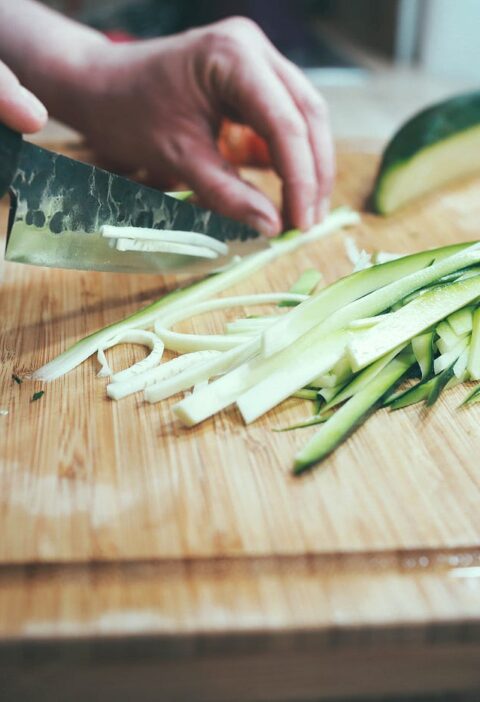Let’s dive into making some incredible homemade grape juice. This recipe is all about capturing the pure, natural essence of ripe grapes without any artificial additives. We’re talking about a luscious, sweet elixir that’ll leave you craving more.
Whether you’ve got a bunch of grapes from your garden or picked up a batch from the market, you’re in for a treat. We’re going to extract every bit of flavour without any fuss.
We’ll guide you through the process step by step. No complicated techniques here (although with some heavy artillery for larger amounts) – just straightforward, delicious results. So, let’s get those grapes ready and start turning them into a refreshing, homemade masterpiece.
Ingredients
Grapes
We’re about to whip up a generous batch of grape juice, and to ensure we have plenty, we’ve gathered a nice amount of Blue Frankish red grapes. (While you can opt for any variety, this guide will primarily spotlight red grape varieties.)

Berry Extraction
With our bountiful grape harvest in hand, the next step is to extract the berries from their stems and give them a squeeze. Since we’re working with a slightly larger quantity, we’ll employ a handy tool known as a grape mill.
Over time, various iterations of this device have emerged, but the modern version harnesses the power of electricity. Simply load the grapes into the upper compartment, and let the gears work their magic, effortlessly separating the stems from the berries while applying the perfect amount of pressure for extraction.

Colour Extraction
Now, our concoction comprises a delightful blend of grape juice and berries. If we were working with white grapes, we’d hasten to the next steps, as the mixture tends to acquire colour rapidly – a transformation we wish to avoid for white juice. However, with our red grapes, we’re aiming for the opposite effect.
Yet, a challenge arises: if left unattended, the mixture could begin its journey towards becoming wine. To pre-empt this, we must maintain a cool environment, achieved either with a fridge or a slightly larger freezer set at approximately 8°C (46.5°F). Additionally, we’ll introduce sugar, which also aids in achieving our desired outcome

During this phase, we’ll let it rest in the cool environment for approximately three days. It’s crucial to give it regular attention, ensuring we maintain the temperature at around 8°C (46.5°F), and keeping a close eye on the sugar levels, aiming for approximately 85 units or more.
Sugar Measuring
To gauge the sugar content, utilize the device provided: simply pour a few drops of juice onto the blue section and observe it against the light. You’ll notice a scale ranging from 0 to 100, offering an accurate reading.

Juice Extraction
After three days, our mixture has notably transitioned into a more liquid state.

Having successfully extracted the colour from the berries (as the majority was held in the skins), our focus now shifts towards maximizing juice extraction and separating the skins. If you were using white grapes, you could continue here.
For larger quantities, we employ a specialized tool known as a grape press. Ours operates on a water-based mechanism, featuring a robust bladder or balloon encased within an iron frame. This bladder expands as it’s filled with water under pressure, aiding in the efficient extraction process.

A clever technique is to re-press the already pressed grapes, extracting a few extra precious liters of juice. Simply remove the compressed grapes, give them a gentle mix, and repeat the pressing process. This resourceful step ensures that we make the most out of our grape harvest.
Crystal Clarity
After the pressing process, we carefully return our refined liquid to the freezer. Upon inspection, we’re greeted by the perfect shade of red, free from any traces of peels or stems. Now, our final challenge, or rather enhancement, lies in achieving crystal clarity. If we were to bottle it at this stage, sediment would be noticeable in the juice, resulting in a thicker texture and less visually appealing appearance. Our aim, of course, is to elevate it to perfection, leaving your loved ones in awe at its sheer beauty, isn’t it?

Filtration
As three more days have slipped by, we now stand at the final stretch of our juice-making journey. With utmost care, we extract the liquid from the top layer, ensuring not to disturb the settled mixture and reintroduce any sediments. This can be accomplished using either a water pump or a simple pipe.
To attain a state of absolute clarity in our juice, one last step precedes the bottling process: filtration. Through the meticulous use of K700, followed by K200, and culminating with EKS filter plates, we refine our juice to a pristine, transparent perfection. This meticulous process guarantees a finished product that stands as a testament to our dedication to quality.

Bottling
At long last, the time for bottling has come. To ensure an extended shelf life for our grape juice, a gentle heating process is in order. We immerse the lower spiral in hot water and pass our juice through it, maintaining a temperature of approximately 82-83°C (180°F).
Once bottled, we swiftly seal them and submerge them in cold water. This dual action serves to rapidly cool the juice, creating a snug seal and a slight vacuum within the bottle. This vacuum ensures the preservation of our meticulously crafted juice, allowing it to be savoured over an extended period.

That concludes our journey in crafting homemade grape juice. I trust you’ve gained some valuable insights today. We turned 200 kg of red grapes into 112 l of crystal clear red homemade grape juice!
Thank you for accompanying us on this delightful venture into the art of juice-making at home. Cheers to your future grape juice makers!





